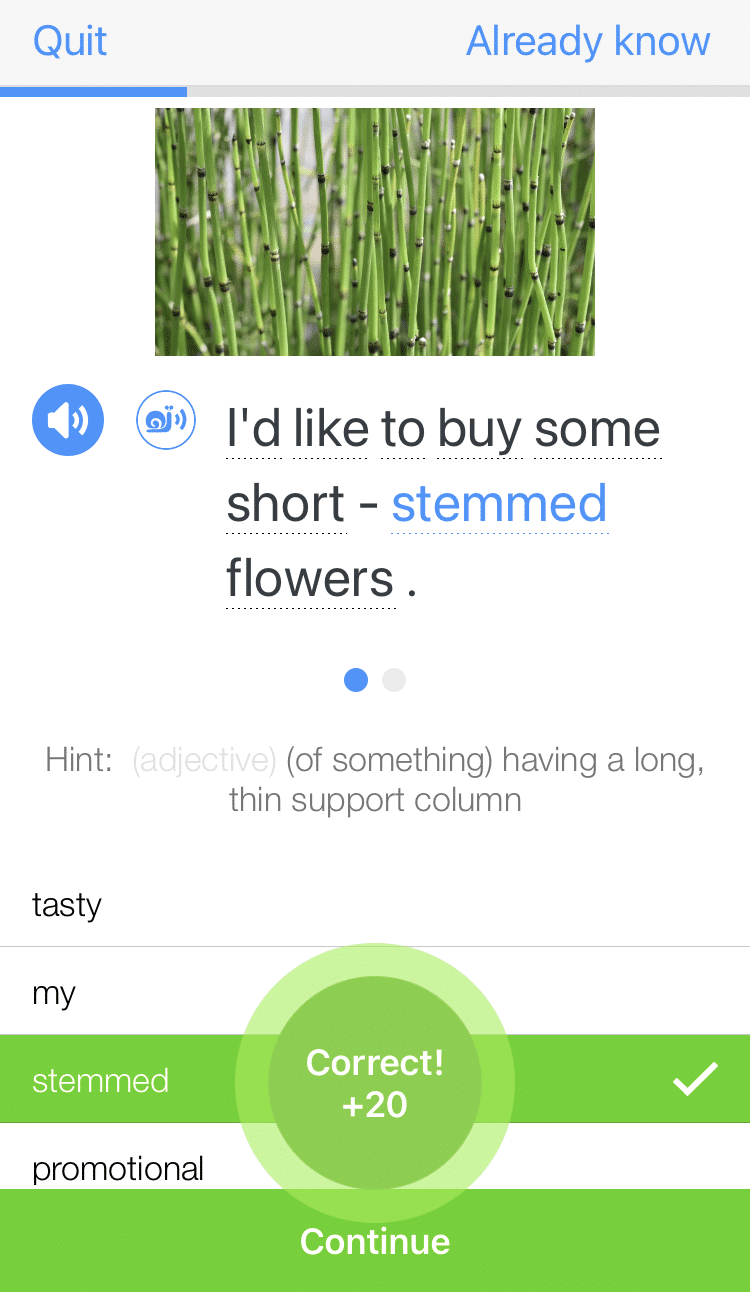How to Teach English Through Short Films and Documentaries

Who doesn’t love movies?
We laugh, we cry and—most importantly—we learn.
Even with movies in your native tongue, the ups and downs of a well-crafted story can teach you unexpected lessons about life and language.
Since you’re here hunting for great ESL teaching techniques, I expect you’ve already read about our favorite ESL video activities.
So, you know that there are tons of ways to use films, television shows and other video clips in your ESL classroom!
You know the importance of enhancing language skills through film — but have you thought to use documentaries or short films?
Granted, these two formats can be a bit polarizing. Some people love them and others need serious motivation to dive in. Short films are often more academic or experimental, and documentaries are fueled by facts, figures and evidence that take brainpower to absorb.
But the reasons why they’re more challenging, as it turns out, are also the reasons why they make excellent teaching tools.
Download: This blog post is available as a convenient and portable PDF that you can take anywhere. Click here to get a copy. (Download)
Why Use Documentaries and Short Films in Your ESL Class?
It’s a valid question, when it seems like there are plenty of other options for video teaching tools out there. Here’s a few reasons why you’ve got to seriously consider incorporating them into your lesson plans:
Give students strong motivation to learn.
Watching films can motivate ESL learners since it’s already an integral part of their everyday life (i.e. watching YouTube or Vimeo). English is the medium of communication in most of films and short videos going around on the Internet, so learners are actually intrigued to watch them in class as part of their ESL curriculum.
Today’s teenage or adult learners don’t really care about the length of the film. They’re familiar with both short videos (clips, trailers, commercials, etc.), as well as longer films. They’ll be psyched to learn the language of their favorite online videos. They’ll also get a chance to learn more about cultural, social and political issues in English speaking countries.
However, you should take more careful steps when it comes to documentaries and short films so as to deliver an interesting lesson—and we’ll explore how to do that shortly.
Provide visual context.
Well, you already know that by watching films, full visual context is created. Thus, not only do you watch the gestures and expressions but you also listen to the phrases and sentences that are being used. In short films, learners tend to be more attentive so as to grasp the meaning in the little time provided (ranging from a few minutes to less than an hour).
Short time limits have a unique way of driving excellent performance. By watching documentaries, more difficult English language concepts and words are smoothly incorporated into picture, therefore, assisting comprehension even before the learner resorts to a dictionary for definitions.
Introduce students to real-life conversation.
ESL learners listen to authentic speech and come to grips with the reality of everyday speech in the foreign language. This is true for all films, but in short films the duration works to your students’ advantage. They’ll only have to tackle shorter segments of film and brief dialogues.
The duration is also a great feature for working in groups. Have students discuss what could happen if the film were longer or do vocabulary activities based on phrases used. They could even act out dialogues based on the script. As for documentaries, with more demanding topics of documentaries, you’ll be able to present even more demanding and challenging language activities to follow.
Choose from a wide variety of activities.
Documentaries can create the basis for challenging debates in your advanced ESL classes. Short films can be accompanied by rich activities based on language items. Motivate games and role-plays where acting out in English plays the central role. (For more ideas on activities read the “how” section below).
Enhance all language skills.
Obviously, all language skills are strengthened during and after a documentary or short film viewing session. In particular, listening is boosted in a creative way—in other words, it isn’t a dreary listening exercise but one that makes sense to the learner.
Likewise, reading and comprehension skills are facilitated through subtitles or the various activities you’ve prepared for learners (i.e. the synopsis, the script etc.). Writing is also enhanced depending on the activities the learners will do, e.g. they could write an alternative film ending or a diary entry based on the documentary they’ve just watched.
Speaking, of course, is boosted in a creative way after watching the short film or documentary. Role playing, language games or team discussion can produce rich oral practice. Isn’t that wonderful? The bottom line: all ESL language skills can be boosted in an enjoyable way through short films and documentaries.
Fit them conveniently into any lesson plan.
Obviously the shorter the film you choose, the easier it’ll be for you, the busy teacher, to include in your teaching session. With documentaries that tend to be a little longer, well…you can absolutely choose shorter ones or even choose important sections of a longer documentary to view in class.
How to Teach English through Short Films and Documentaries
There are many ways to go about teaching with these awesome tools, but I’m going to break down my strategy here. It’s presented in 5 easy steps that’ll help you reach your students and get everyone engaged in the viewings and activities.
1. Always pay attention to students’ ages and language levels.
This part’s a snap. There’s a huge variety of resources on the Internet (especially on Youtube and FluentU, of course). However, you shouldn’t forget this step. You wouldn’t like to choose ridiculously easy or boring films for your advanced learners!
On the other hand, very difficult short films and documentaries for your elementary students will be a burden for them. Too bad, isn’t it? Let me give you a couple of examples that I’ve used in my EFL classes.
For teenagers or adults at elementary level, a nice choice could be the award-winning short film, “The Most Beautiful Thing” by Cameron Covell. This film is mostly based on the plot, the strong images, a few writing lines, music and only a few utterances in English so even beginners can watch it successfully and effectively do the related activities you assign.
For more advanced learners, a nice example could be the documentary, “A Class Divided,” especially if you want to help your advanced classes with topics such as intolerance or racism.
2. Decide if you’re going to use subtitles.
Personally, I think subtitles is the way to go. Judging from my experience, even advanced learners need to read subtitles. But in what language? English, of course! You could also give them handouts with the subtitles where particular words or phrases are missing so that they’ll go ahead and fill them in while following the film.
It’s up to you to decide if they’re better off doing this in pairs or individually. They could do this subtitling exercise as a while-watching or an after-watching activity.
3. Always think of the thematic route.
It could be based on the topic of the module you’re dealing with in your coursebook or it could be based on a celebration (i.e. Halloween, Christmas, Chinese New Year etc.) or linked to a school subject (i.e. history or geography).
Also, your choices could have to do with topics like thematic word groups (food, jobs, the environment, etc.) or more demanding themes such as human rights or special needs.
4. Always prepare language and comprehension activities beforehand.
You cannot simply press the “play” button and let the DVD or the media file go on! You should have prepared a comprehensive lesson plan, handouts for the students and challenging activities if you expect these lessons to have an added value to your classroom teaching experience.
Sample activities
- You can play the short film for the first time but with no picture—only music or sound! Then ask students to imagine what these sounds or pieces of music are linked to and think of a story (setting, atmosphere, characters and so on). Have them jot these details down. When students finally watch the actual short film, they can compare it with their own stories and more assignments can follow.
- Similarly, students could start a project or a school survey based on the topics the documentary or short film deals with.
- Discussions and debates can take place in upper-intermediate or advanced classes just after watching a challenging documentary or short film.
- Last but not least, students could write imaginary emails to the director or publish school newspaper articles or blog posts.
If you’re in need of video inspiration, definitely check out the video library on FluentU.
FluentU takes authentic videos—like music videos, movie trailers, news and inspiring talks—and turns them into personalized language learning lessons.
You can try FluentU for free for 2 weeks. Check out the website or download the iOS app or Android app.
P.S. Click here to take advantage of our current sale! (Expires at the end of this month.)

You can pick out great video clips to watch together as a class, or you can assign videos for students to watch at home or on their own during computer lab time.
Armed with FluentU’s subtitles, extensive context-based dictionary, vocabulary lists and post-viewing quizzes, you’ll be sure to come up with some great activities for your students on the fly.
5. Take the needs of younger students into special consideration.
Although my focus of interest in this post was teenage or adult learners, I cannot help adding a tip to any reader teaching younger ESL learners. You can use short clips along with appropriate language activities. Modern animation films are quite catchy and work well in class. Take a look at “Paddington”or “Penguins of Madagascar.”
You could also use the rich variety of subtitled videos on FluentU depending on your learners’ language level. In order for you to read some more introductory tips and also find step-by-step resources, you can visit this ESL teaching website or browse this excellent collection of films by topic. Have a nice time with short films and documentaries in your ESL classes, and happy screening!
Download: This blog post is available as a convenient and portable PDF that you can take anywhere. Click here to get a copy. (Download)
And One More Thing...
If you like learning English through movies and online media, you should also check out FluentU. FluentU lets you learn English from popular talk shows, catchy music videos and funny commercials, as you can see here:
The FluentU app and website makes it really easy to watch English videos. There are captions that are interactive. That means you can tap on any word to see an image, definition, and useful examples.
For example, when you tap on the word "searching," you see this:
Learn all the vocabulary in any video with quizzes. Swipe left or right to see more examples for the word you’re learning.

FluentU helps you learn fast with useful questions and multiple examples. Learn more.
The best part? FluentU remembers the vocabulary that you’re learning. It gives you extra practice with difficult words—and reminds you when it’s time to review what you’ve learned. You have a truly personalized experience.
Start using the FluentU website on your computer or tablet or, better yet, download the FluentU app from the iTunes or Google Play store. Click here to take advantage of our current sale! (Expires at the end of this month.)










